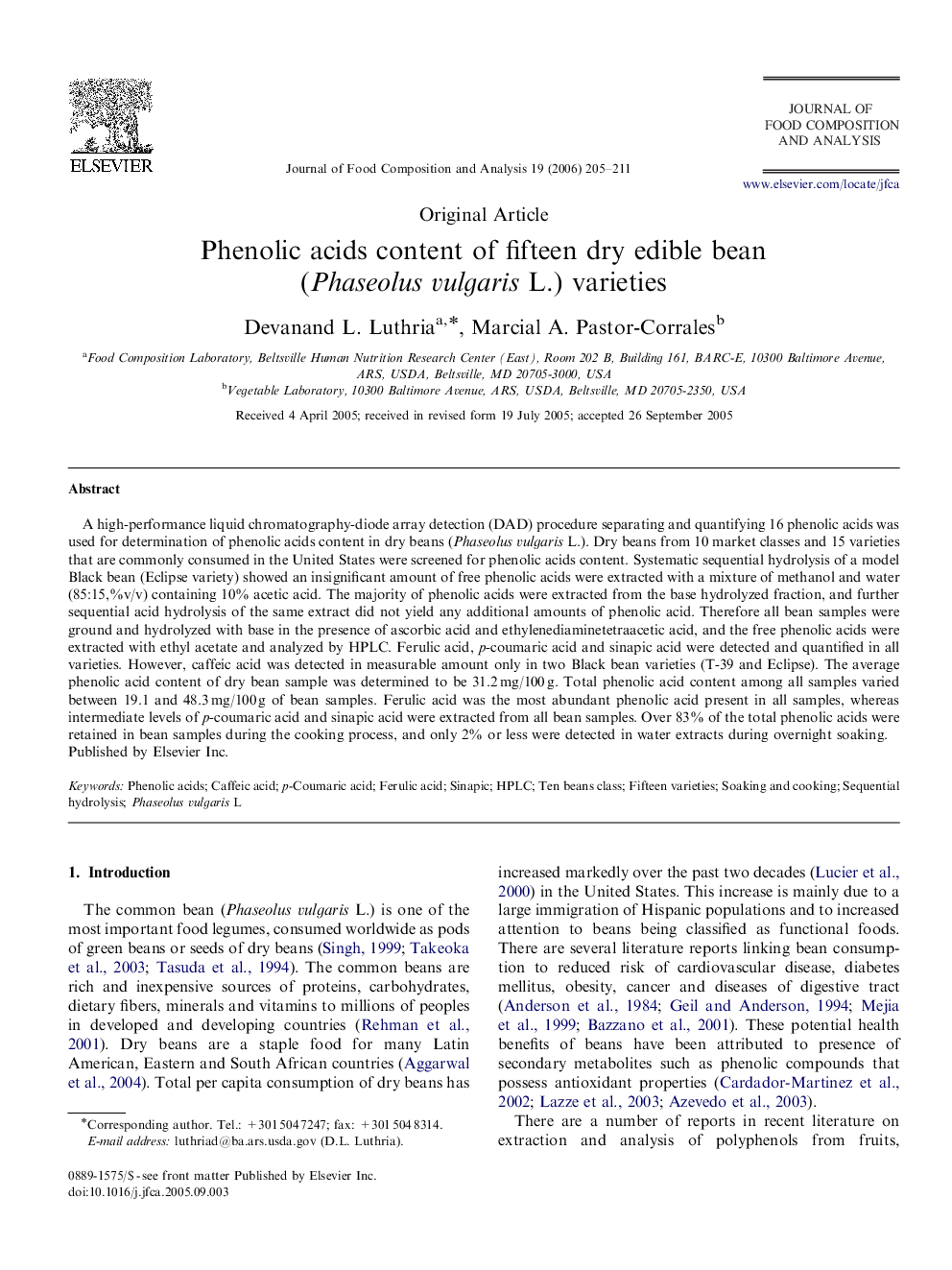| کد مقاله | کد نشریه | سال انتشار | مقاله انگلیسی | نسخه تمام متن |
|---|---|---|---|---|
| 1219372 | 1494514 | 2006 | 7 صفحه PDF | دانلود رایگان |

A high-performance liquid chromatography-diode array detection (DAD) procedure separating and quantifying 16 phenolic acids was used for determination of phenolic acids content in dry beans (Phaseolus vulgaris L.). Dry beans from 10 market classes and 15 varieties that are commonly consumed in the United States were screened for phenolic acids content. Systematic sequential hydrolysis of a model Black bean (Eclipse variety) showed an insignificant amount of free phenolic acids were extracted with a mixture of methanol and water (85:15,%v/v) containing 10% acetic acid. The majority of phenolic acids were extracted from the base hydrolyzed fraction, and further sequential acid hydrolysis of the same extract did not yield any additional amounts of phenolic acid. Therefore all bean samples were ground and hydrolyzed with base in the presence of ascorbic acid and ethylenediaminetetraacetic acid, and the free phenolic acids were extracted with ethyl acetate and analyzed by HPLC. Ferulic acid, p-coumaric acid and sinapic acid were detected and quantified in all varieties. However, caffeic acid was detected in measurable amount only in two Black bean varieties (T-39 and Eclipse). The average phenolic acid content of dry bean sample was determined to be 31.2 mg/100 g. Total phenolic acid content among all samples varied between 19.1 and 48.3 mg/100 g of bean samples. Ferulic acid was the most abundant phenolic acid present in all samples, whereas intermediate levels of p-coumaric acid and sinapic acid were extracted from all bean samples. Over 83% of the total phenolic acids were retained in bean samples during the cooking process, and only 2% or less were detected in water extracts during overnight soaking.
Journal: Journal of Food Composition and Analysis - Volume 19, Issues 2–3, March–May 2006, Pages 205–211